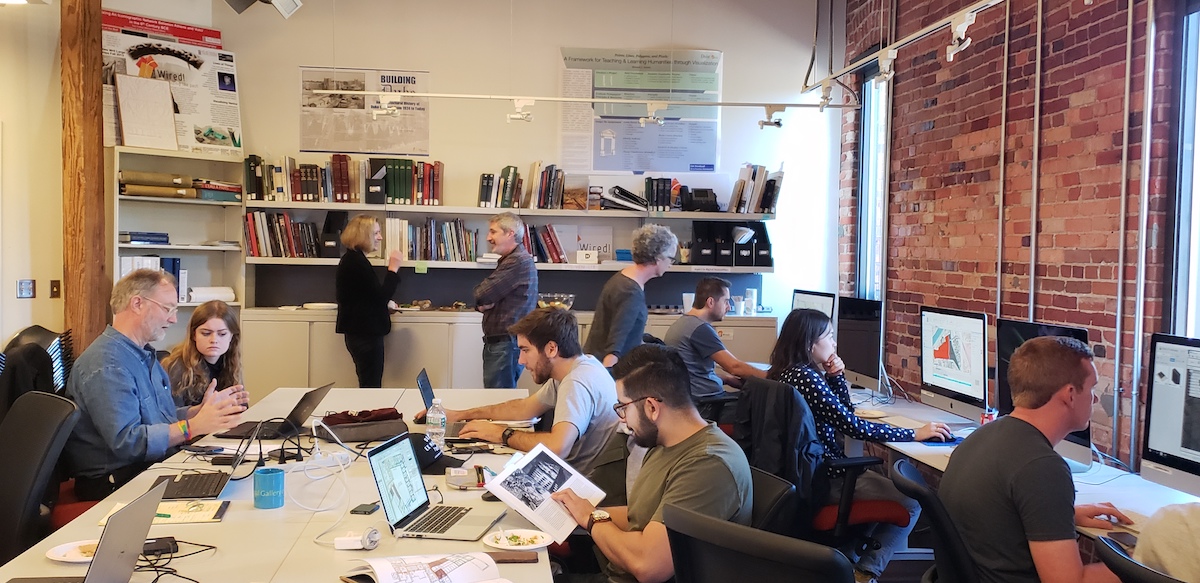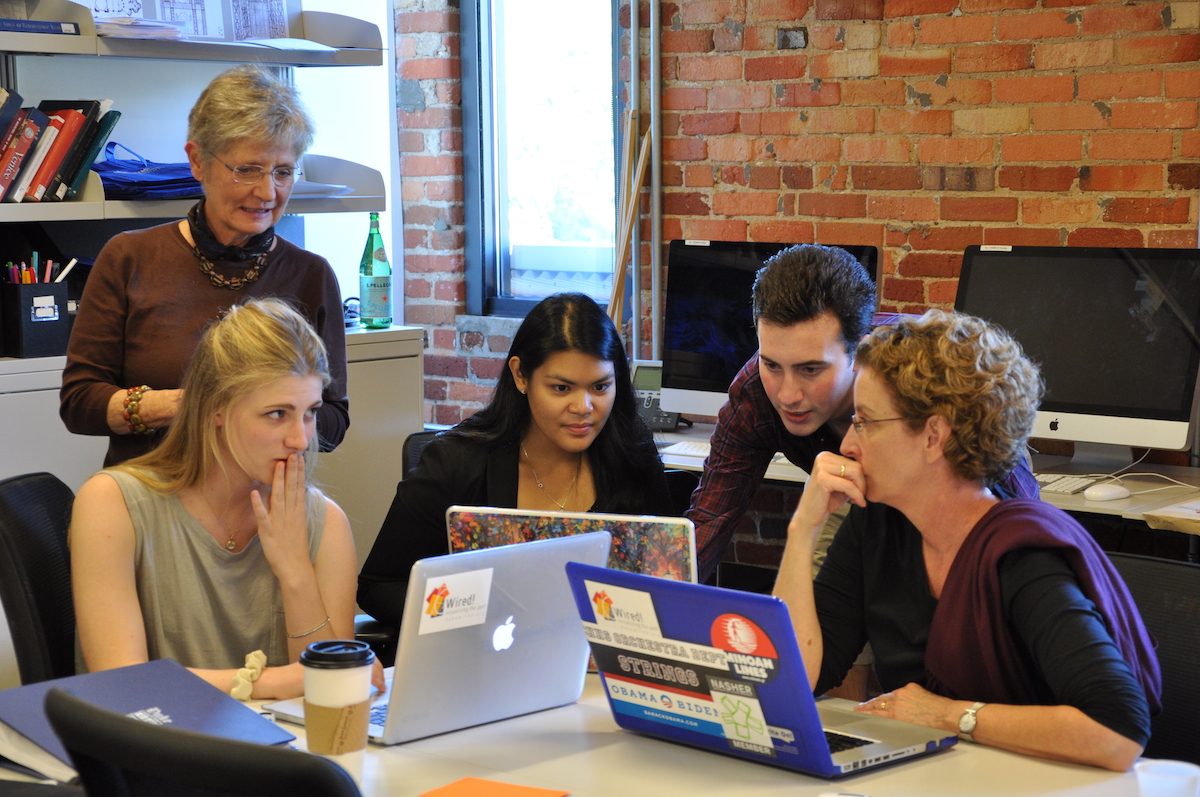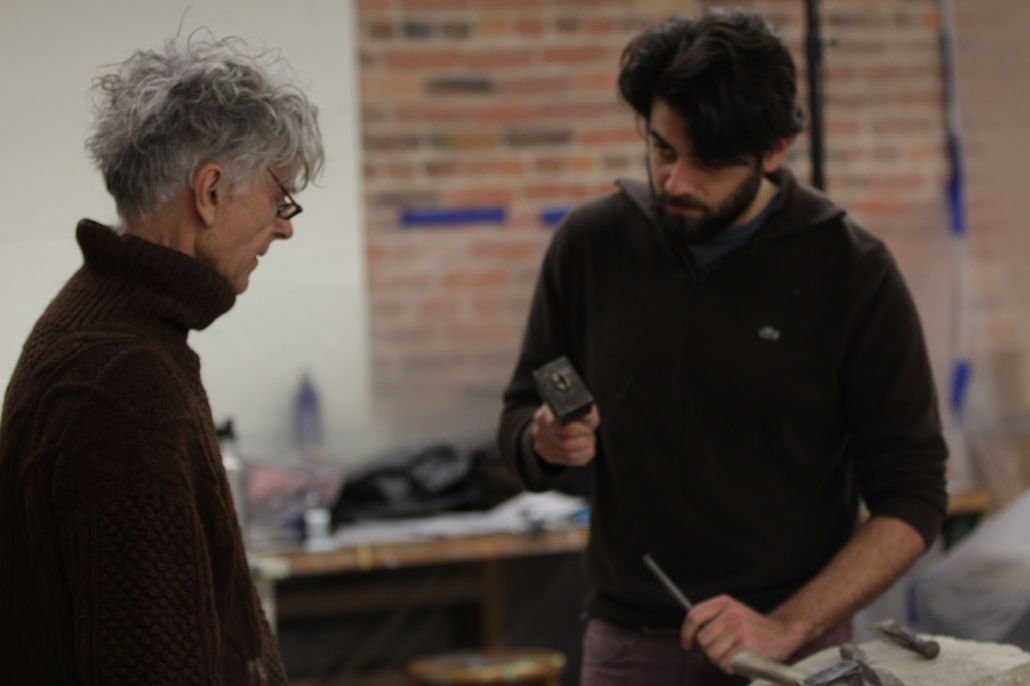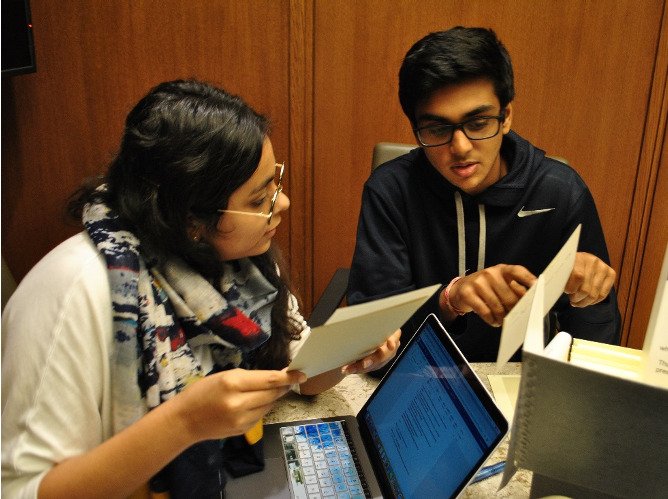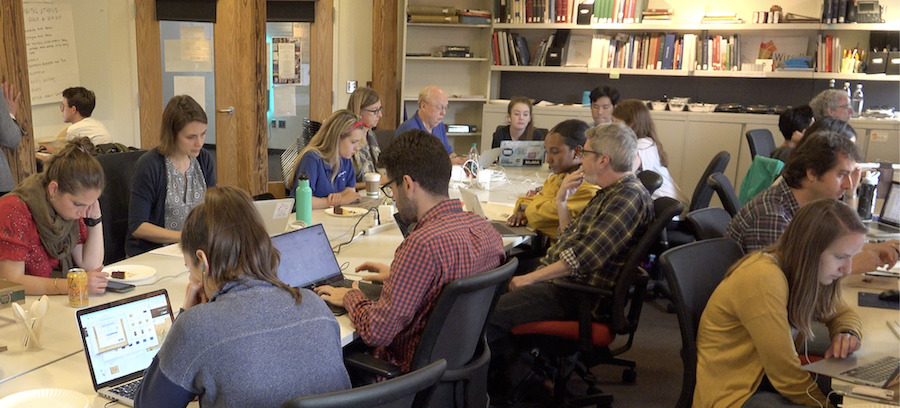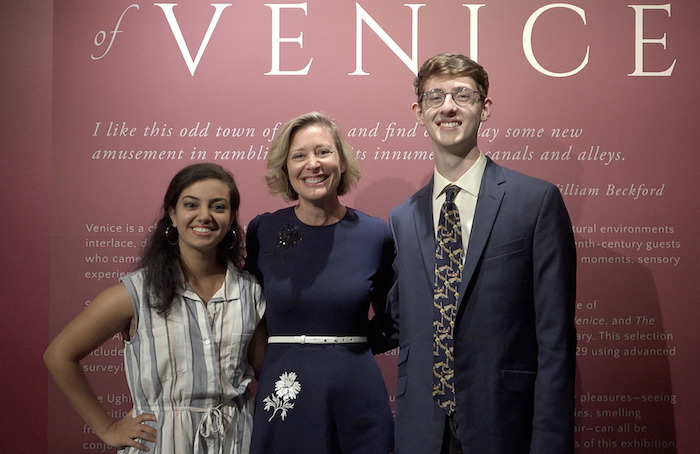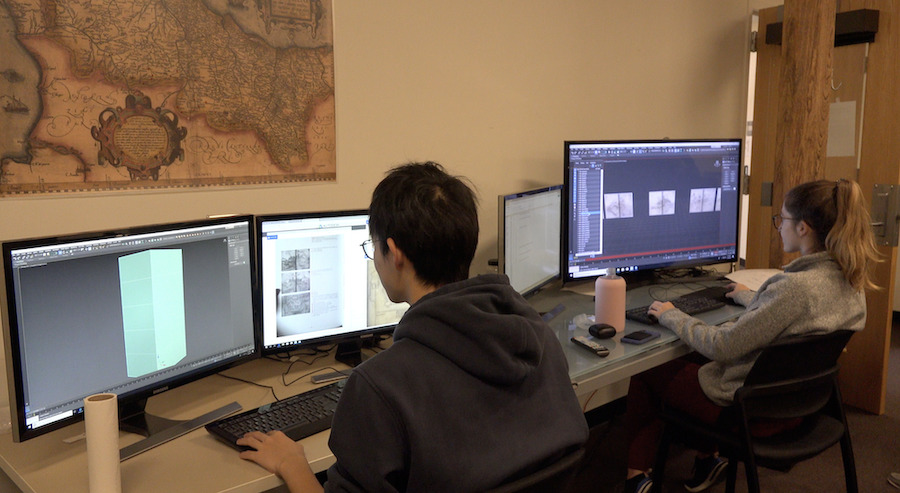A New Lab Model for Art History & Visual Culture
- Kristin L. Huffman
Research Practice as a Vehicle for Integrating Pedagogy and Scholarship
The Wired! Lab’s innovative combination of expert-led scholarly research and student training has had a strong impact on how we practice Humanities-based scholarship. The lab’s model, implemented as a highly experimental enterprise within Art, Art History & Visual Studies at Duke (see History), has established a paradigm for how to combine, effectively and meaningfully, humanities research, pedagogy, and scholarly output. It has done this through practice-based, team-built teaching and learning. The Lab’s research teams and classes make and do scholarship in ways that translate into completed outcomes, which not only enhance the process of learning in semester increments, but also contribute to and result in long-developed public-facing outputs.
The research drives the pedagogy and has resulted in a new methodology. The process, an accomplishment for its contributions to the field, has led to a variety of scholarly work. This work includes traditional formats, such as articles and edited volumes (Visualizing Venice) along with newer forms of public-facing scholarship, such as engaging, digitally-driven exhibitions (A Portrait of Venice and Senses of Venice), augmented-reality cultural interventions (Statues Speak and Digital Durham), and online platforms with vast repositories of data and visualized knowledge (The Medieval Kingdom of Sicily Image Database and the Dictionary of Art Historians).
A Model for Practice-Based Learning
The Wired! Lab’s research-teaching model has led the way among Digital Art History programs within academic research institutions across the country since its founding more than ten years ago. The year 2013 marked a turning point in its integrated teaching/learning strategies. In that year, the lab capitalized on funds from an internal Duke grant (Humanities Writ Large Mellon Funds) to support undergraduate student research and learning opportunities through fellowships connected to specific research projects.
Student fellows, working alongside faculty, Digital Humanities staff, and librarians as well as graduate students, contributed to five long-term research projects hosted within our lab, a physical space embedded within the Department of Art, Art History & Visual Studies.1 Since then the number of research projects has more than doubled, the number of digital methods expanded, and the opportunities extended to students have exploded.
Signature courses, such as the survey course developed in Neatline by Caroline Bruzelius and Hannah L. Jacobs with Lee Sorensen and Joseph C. Williams, Gothic Cathedrals (Caroline Bruzelius), and a first-year seminar on early modern Venice (Kristin Love Huffman), have attracted students to come work in the lab on long-term research projects following the completion of their coursework. In addition, student research within the lab has led to tailored independent studies and senior thesis projects (distinction). Finally, and most importantly for department and inter-departmental programs of study, in the lab’s ten years, the team has developed new curricular pathways and professional development for both undergraduate and graduate students (see Teaching).
One example that underscores the various pathways of innovative research-based learning is the first-year seminar (VMS 89S Mapping and Modeling Early Modern Venice and later VMS 89S Visual Culture of Venice). This course was established as a means of exposing students to new teaching-learning strategies with an eye toward the recruitment of exceptional students to the lab. It began with a research question: how do we study lost architectural spaces both as independent spatial and relational objects, as well as within their original contexts as organic structures that change over time? The course included the training of a graduate student working closely with a Digital Humanities expert to generate modeling exercises that formed the foundation for the development of student projects. Workshops, tutorials, and ongoing consultation for the course also included mentoring and training workshops with our colleagues Andrea Giordano and Cosimo Monteleone at the University of Padua’s School of Architecture and Engineering. The research idea that led to the development of the course—a scholarly investigation into a demolished church in the most important public square of Venice: Piazza San Marco—resulted in a co-authored publication in the Journal for the Society of Architectural Historians, among other productive results.
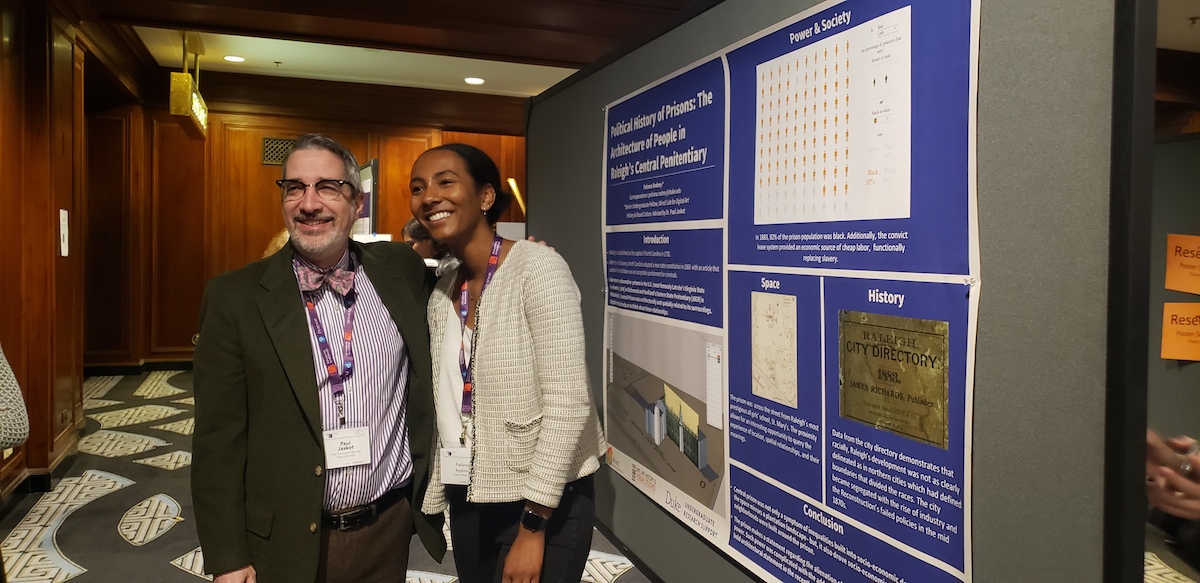
Fridays in the Lab: Community & Shared Learning
On Fridays the lab is filled with our faculty, staff, and students, brimming with energy and the constant buzz of animated intellectual exchanges. Since 2013, teams have been meeting in the lab’s physical space to work out problems, build together, and apply collected research in an effort to advance scholarly projects.
Here, graduate students mentor and guide undergraduates, faculty and staff solve research questions with graduates and undergraduates, and undergraduates (to come full circle) offer their particular sets of expertise to inform the rest of the team.
In this, every member contributes to the process of making; there is never a unilateral “teaching” but rather a multi-dimensional, constantly unfolding process of answering research questions—a process that is unique and to which every member contributes to arrive at an answer, new ideas, and final scholarly conclusion.
A Win-Win for Faculty, Staff, and Students
This unique approach to the integration of ongoing research and adaptable instruction has permitted an imaginative application of new types of closely mentored teaching and research. For faculty and staff, there is innovation, creativity, the application of new digital methodologies along with traditional scholarly modes, making, and building. All this leads to new analyses and ways of thinking about well-studied material; new discoveries; new scholarly opportunities with engaging platforms, including reaching wider audiences than traditionally available; and, ultimately, new ways of developing our potential as the best possible scholar-teachers.
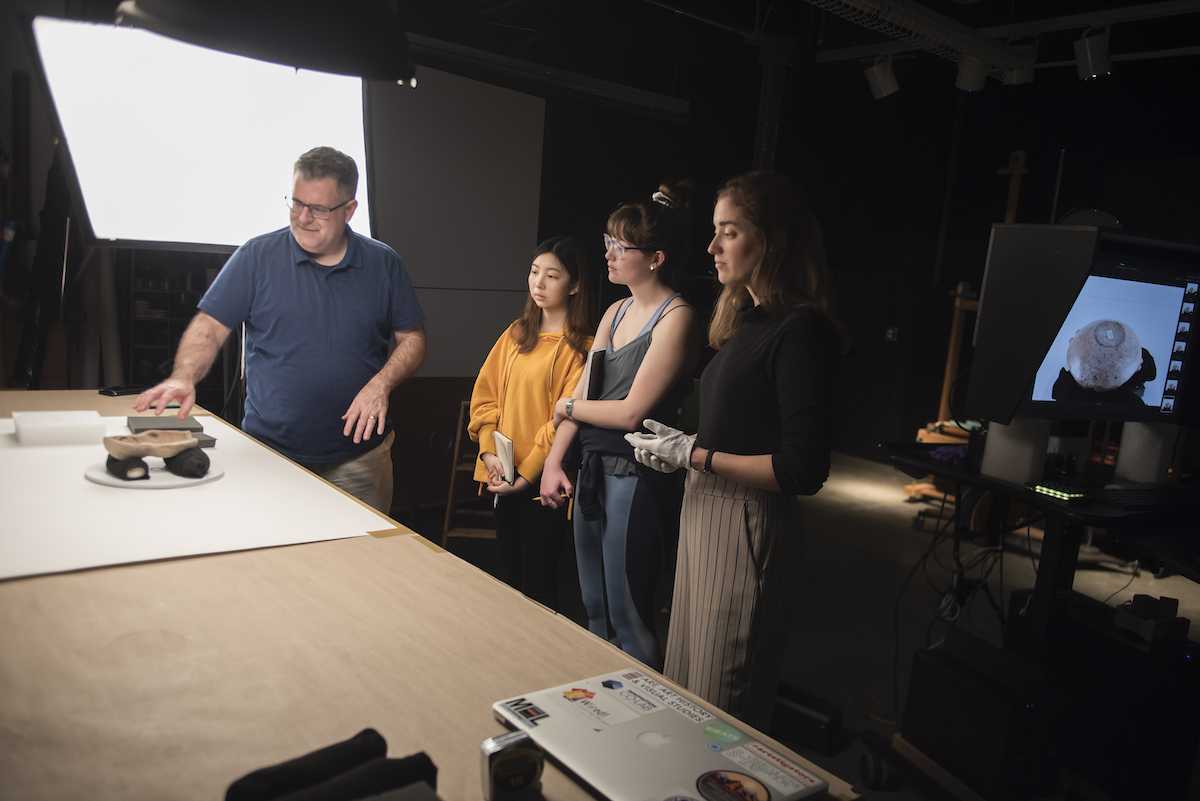
For students, the lab has offered opportunities to engage with faculty and staff in meaningful ways. This includes public-facing scholarship (Visualizing Venice); team-based training; learning by doing; avenues for individual research; and possibilities for co-authored published material. It bears underscoring, however, that while the outcomes have been numerous and successful, it is the process that is so exceptional.
The translation of traditional research into digital formats—be it the 3D modeling of a church, palace, or castle, or the creation of repositories of data—often opens up as many new questions as are answered. It is here that the magic happens and the collaborative, ongoing process of making reveals new lines of inquiry and, at times, pushes collaborators (students, faculty, and staff) to engage with the material in creative, critically unexpected, and imaginative ways.
It is here that the magic happens and the collaborative, ongoing process of making reveals new lines of inquiry and, at times, pushes collaborators (students, faculty, and staff) to engage with the material in creative, critically unexpected, and imaginative ways.
The “unknowns” and “uncertainties” come out into the open and can no longer be kept hidden, swept into the time-honored footnote for a later solution. It is from this making together—undergraduate and graduate students, faculty, and staff with specialized knowledge—that a new methodological model for both research and teaching has emerged.
Banner Image: The Sandcastle team uses image tagging technologies to help computers ‘see’ the components of historic views. This view shows the annotation of the Lisbon Cathedral in the Braun Hogenberg View. Image Credit: Edward Triplett
Notes
-
The first five projects were: Digital Athens, The Medieval Kingdom of Sicily Image Database, The Lives of Things, Operating Archives, and A Portrait of Venice. ↩︎
